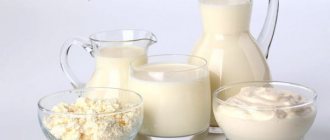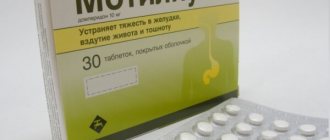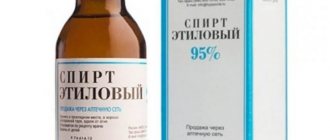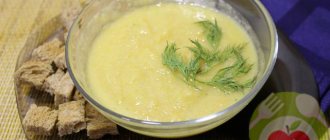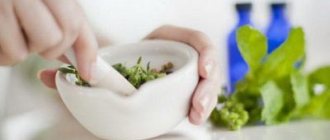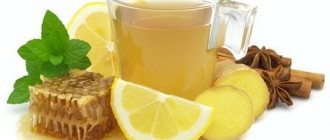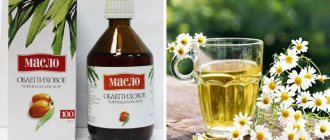“Gastritis” is a general term, a collective concept, so to speak, that includes a number of pathological changes in the stomach. The unifying factor of these pathologies is inflammation of the mucous membrane and deeper layers. The main cause of the disease is the pathogen Helicobacter Pilori, which destroys the tissue lining the stomach. A special form - reflux gastritis, occurs due to frequent cases of movement of the contents of the duodenum back into the stomach cavity.
Diagnosis of gastritis
Gastritis is classified according to:
- the depth of damage to the inner surface of the stomach;
- the nature of the disease (acute, chronic);
- acidity (gastritis with high and low acidity).
Main symptoms:
- pain in the epigastric region;
- heartburn, belching, nausea;
- heaviness in the stomach after eating.
Non-drug treatment of gastritis
Before starting treatment, it is necessary to undergo diagnostics to accurately determine the form and stage of this disease. Alternative treatment for gastritis can be a good addition to drug therapy prescribed by your doctor. At the same time, it is absolutely necessary to follow the diet and nutrition rules for gastritis, namely: eat intermittently, in small portions, often, chew food well and do not eat cold or hot.
Treatment of gastritis with folk remedies is to relieve inflammation of the gastric mucosa and reduce acidity. And for the treatment of gastritis with low acidity, there are also special recipes and some of them are presented in this article.
Brief content-menu for the further part of the article:
- The most famous folk remedies for gastritis
- Infusions and decoctions
- Alcohol-containing tinctures
- Remedies for the treatment of gastritis with low acidity
- 10 more different ways to treat gastritis at home
- Simple drug treatment: hydrogen peroxide
Popular folk remedies for treating gastritis
Mineral water
A good effective remedy for gastritis with high acidity is mineral water. The presence of alkali plays a key role. After drinking water, hydrochloric acid begins to be produced in smaller quantities. Thanks to this, heartburn occurs less frequently and the feeling of discomfort after eating decreases.
Regular consumption of water promotes the formation of mucus, which protects the epithelium from the aggressive effects of acid. Medicinal water is enriched with various doses of minerals and vitamins. It follows from this: you need to make the right choice, otherwise you can get the opposite result.
You should start taking water gradually, with 100 ml per day. When choosing a mineral water, you need to pay attention to the label so that the acidity level matches the one determined by the attending physician.
The most famous folk remedies for gastritis
Potato juice.
One of the oldest ways to treat stomach diseases is to drink fresh potato juice on an empty stomach. Half of the effect is based on the alkaline reaction, so this method is excellent for treating gastritis with high acidity. Another beneficial effect of juice is that starchy substances coat the gastric mucosa, blocking contact with irritating bacteria.
To make juice, a few medium-sized tubers are enough. Do not cut off the peel! Wash the potatoes and extract juice using a juicer. If you don’t have a juicer, you can grate the tubers (or put them through a meat grinder) and squeeze the juice through cheesecloth.
There are different ways to take potato juice. Which one is best for you, you can check with your doctor or, as they say, find out at random. So, further details.
Method of administration No. 1: Every morning on an empty stomach 30 minutes before breakfast. Dose – 150 grams. Course - according to condition.
Method of administration No. 2: Every morning on an empty stomach 1 hour before breakfast. Dose – 250 grams. After taking it, it is advisable to lie down for 30 minutes. The course is 10 days, after a 10-day break the course can be repeated.
Method of administration No. 3: Once a day 30-40 minutes before meals. The dose gradually increases over 2-3 weeks from 1 tbsp. spoons up to 125 grams (half a glass).
Aloe juice.
Due to its pronounced antiseptic properties, agave juice (aloe) suppresses the action of harmful microorganisms, so this remedy is useful even for relatively severe forms of gastritis. Juice squeezed from aloe leaves is taken 2 times a day before meals, 2 tbsp. spoons.
Olive oil.
It has long been noted that natural olive oil (without foreign impurities and additives) helps well with gastritis. The daily dose is 1-2 tbsp. spoons. You can take the oil on an empty stomach, or add it to food, for example, in salads, or you can simply eat it with bread.
Sea buckthorn oil.
Another common method of treating gastritis is drinking sea buckthorn oil 3 times a day, 1 teaspoon, 30-40 minutes before meals. Sea buckthorn oil is effective due to the fact that it has healing, anti-inflammatory and enveloping properties. It is effective for all types of gastritis with high acidity (including erosive), and also helps with stomach ulcers and duodenal erosion.
Green apples.
According to some reports, treating gastritis with apples often gives excellent results. But this is provided that both before and after taking apples the patient does not eat anything for 3 hours (otherwise the fermentation processes may cause an exacerbation). It is most convenient to arrange a therapeutic breakfast, because... the stomach is already empty at night, and 3 hours after eating apples you can have a second breakfast. During the day, the reception can be repeated, but this should not be done at night.
Apples should be eaten without skin, mashed or finely chopped, 2-3 pieces. During the first month of treatment, you must eat apples daily. The second month - 3 days a week, the third - 1 day is enough.
Quail eggs.
It is customary to treat gastritis with quail eggs as follows: 30 minutes before meals, take a raw quail egg and drink it. Thus, two to three eggs per day are allowed. And don’t be afraid of salmonellosis - quails don’t get it.
Alkaline mineral water
will be useful for reducing acidity in gastritis. You need to drink this water 1 hour before eating. Warm slightly before use. Drink quickly. Dose: 125-250 ml.
Symptoms
Signs accompanying gastritis with high acidity appear in the following cases: overeating, stress, food poisoning, consumption of stale foods, alcohol, smoking and irregular diet. The most common symptoms are:
- heartburn;
- aching pain;
- bloating;
- increased pain and nausea when the patient feels hungry;
- sometimes the disease is accompanied by vomiting;
- unpleasant belching with sourness.
Infusions and decoctions
Flax seed infusion
gives excellent results in the treatment of gastritis. The effect is based on the enveloping, anti-inflammatory and restorative effect of the infusion. Recipe No. 1: 1 tbsp. pour a spoonful of seeds into 0.5 liters of boiling water and leave for 1 hour. Take 1 glass per day before meals. Recipe No. 2: 3 tbsp. Pour 1 liter of boiling water over spoons of seeds, close the container with a lid and wrap tightly, for example, with a towel. Leave for 10-12 hours. Take 1/2 cup (125 ml) 30 minutes before meals. Recipe No. 3: 2 tbsp. Place spoons of seeds into a thermos and pour 1 liter of boiling water. Close the thermos tightly and shake the contents for a while, then leave for 2 hours. Then open the thermos and strain the resulting substance. Take 100 ml 3 times a day before meals.
Oat decoction or oatmeal jelly
for gastritis, it relieves pain and in general has an effect that can be compared with the effect of flaxseed infusion. The difference is that oat decoction also normalizes metabolism. Oatmeal jelly is a hypoallergenic product that is suitable for pregnant women, children, and people with erosive gastritis. Recipe:
- measure 2 cups of oatmeal (and preferably grind the flakes into powder);
- pour 2 liters of warm water into a suitable container and pour oatmeal (or powder) into it;
- stir and leave for 10-12 hours;
- strain and remove solids;
- you can add salt in the amount of 1/2 teaspoon;
- cook until thickened (about 30 minutes over low heat).
You can add a little sugar or honey to the finished product. Oatmeal jelly is consumed either as a separate dish (100-150 ml each) or in small portions before the main meal (from a tablespoon to 1/2 cup).
Brewed chamomile flowers
for gastritis, it relieves inflammation of the gastric mucosa well. Recipe: pour 1 teaspoon of dried flowers with 1 glass of boiling water and leave for 15-20 minutes. Take half a glass 20 minutes before meals, 2-3 times a day.
Calendula
for gastritis, including reflux gastritis, it is good because it has anti-inflammatory properties. To prepare the infusion, take 1 teaspoon of flowers per glass of boiling water. After 20 minutes the product is ready for use. Take 1/2 cup before meals 3 times a day.
Sea buckthorn berry decoction
It is prepared as follows: pour 0.5 liters of boiling water into a small saucepan, add 3 tablespoons of berries and cook over low heat for 20 minutes. The finished broth must be filtered. Take 1 glass 2 times a day.
Mint
It relieves inflammation and cramps in the stomach well. 1 teaspoon of dried mint and 1 cup of boiling water is enough. After 15-20 minutes, you can drink the infusion. Take 1/2 cup of brewed mint 2-3 times a day before meals.
Infusion of wild strawberry roots and leaves.
The infusion is very easy to prepare. You need to take a liter container, fill half of it with a mixture of leaves and roots, pour in 0.5 liters of boiling water and leave for 8-10 hours. Strain before use. Take 1/2 cup 1 time per day.
Infusion of yarrow herb
useful for erosive gastritis. Place one tablespoon of herb in a thermos and pour a glass of boiling water. Close the thermos and wait 2 hours. Strain. Take 1 tbsp. spoon 3-4 times a day half an hour before meals.
Infusion of burdock roots.
Has a good therapeutic effect for gastritis. To prepare, you need to finely chop a small amount of roots, then pour 1 teaspoon of roots into 0.5 liters. boiling water The infusion will be ready in 10-12 hours. Take 4 times a day, 1/2 cup.
Burdock root decoction
has the same effect as the infusion, only it is prepared faster and the doses are smaller. The decoction is prepared as follows: pour 2 teaspoons of crushed roots into a small metal bowl, pour 0.5 liters of boiling water and simmer over low heat for 10 minutes. Take 1 tbsp of this decoction. spoon 3 times a day.
Birch bark.
In this case, we are talking only about red birch bark, which was obtained in the spring at a time when birch trees produce sap. An infusion of the bark helps with prolonged gastritis and perfectly “extinguishes” acute heartburn. Recipe:
- 2 tbsp. pour spoons of bark (finely chopped!) into 1 liter of water, the temperature of which should not exceed 60° C;
- leave for at least 2 hours (3 is possible);
- strain.
Infusion of birch bark for gastritis is taken 3 times a day 30 minutes before meals, 125 grams (half a glass). Important note: 15 minutes after each dose, you must eat 1 tbsp. a spoonful of butter, after melting it. The course of such treatment is 20 days.
Using flax
Flax seeds are especially valuable in treating stomach problems. When they are cooked, mucus is formed, which can create reliable “armor” for the walls of the esophagus and the gastric mucosa. In addition to its enveloping properties, flax has a healing, anti-inflammatory and disinfectant effect.
For gastritis with high acidity, flax provides protection that does not allow gastric juice to have a negative effect on the affected areas of the mucosa. The seeds of this plant are very convenient to use. Below are several options for using the healing agent:
- Decoction. For ½ liter of water, take 15 g of seeds (1 tbsp.), After boiling, cook for 10 minutes. Wait until the mixture cools down and thickens well. Usage rate: 1 tbsp. l.
- Infusion. For 1 l. water - 45 g of seeds. Grind the flax, pour boiling water over it and leave in a warm place. Recommended dose – 70 ml. You can add a herbal mixture of chamomile, thyme, coriander and tansy to the infusion. Other plants are also used that reduce the acidity of gastric juice. They are mixed with dry flax seeds and brewed, or infused separately and then poured into the flax solution.
- Kissels and porridges. Flax seeds are ground into flour. The powder is used to prepare jelly (in the usual way) and added to various porridges. It can be used as a seasoning for various dishes. Ground seeds can also be added to fruit jelly.
Each folk remedy has its own norm. The limit for flaxseeds for an adult is 50 g per day. Due to the high fiber content, medicinal seeds cause flatulence and heaviness in the stomach. To avoid such a nuisance, eating flax should be accompanied by drinking plenty of fluids.
Caution in the use of seeds should be exercised by people who have increased bile production. It is better for such patients to choose another traditional method of treatment.
Alcohol-containing tinctures
Propolis.
Treatment of gastritis with propolis tincture is considered one of the most effective methods. You can buy the tincture at the pharmacy, or you can prepare it yourself. To prepare the tincture at home, you will need 50 g of propolis and 0.5 liters of vodka (or a glass of medical 96% alcohol, plus a glass of drinking water). You need to insist for at least 7 days, and the container must be shaken every day. Before use, it is recommended to dissolve a single dose of tincture in water, namely: 10 drops of tincture per 50-100 ml of water. Take 30-40 minutes before meals. Course 3 weeks.
Sophora
(Japanese acacia). A good effect has been noted from the use of Japanese acacia tincture for gastritis. Recipe:
- Finely chop fresh Sophora fruits and place in a container;
- pour vodka over the fruits (1:2 – one part fruit, two parts vodka);
- close the container and leave the contents for 10-14 days;
- strain, store in the refrigerator.
Take 3 times a day, 30 drops 30 minutes before meals. The fourth dose should be taken immediately before going to bed. The course lasts 3 weeks. If necessary, you can repeat it, but only after a mandatory break of 10 days.
Kolanchoe.
Another alcohol-containing tincture for the treatment of gastritis is a tincture of colanchoe juice. The juice can be bought at a pharmacy. If you have Kolanchoe growing at home, you can extract the juice yourself as follows:
- Remove the plant from the windowsill for a week so that it is not exposed to sunlight or heat.
- Cut off the juiciest strong leaves and rinse them well with water.
- Using a juicer, squeeze out the juice and strain through cheesecloth folded in 3 layers (or grind the leaves manually or in a meat grinder to a mushy consistency and squeeze through cheesecloth).
- Store the finished juice in the refrigerator in a glass container.
Tincture recipe: pour 100 g of juice into 0.5 liters of vodka and add 1/4 teaspoon of honey, leave for one and a half months (45 days). Take 1 tbsp. spoon in the morning on an empty stomach.
Causes of superficial gastritis
It has been established that the main reason for the development of the disease is the presence of the bacterium Helicobacter pylori. While in the body, it does not manifest itself until a favorable situation arises. The following causes of superficial gastritis provoke its activity:
- incorrect, prolonged use of medications;
- eating disorders - fatty foods, dry food, sweet soda;
- alcohol abuse;
- smoking;
- eating more salt and spices;
- unfavorable working conditions - gas pollution, harmful fumes, poisons, dust.
Risk factors play a role in the development of superficial gastritis:
- chronic fatigue;
- stress;
- anemia;
- metabolic disease;
- infectious diseases;
- pathologies of the endocrine system - thyroid, pancreas;
- liver diseases;
- food poisoning;
- rotavirus infection;
- stress at work;
- autoimmune diseases;
- food allergies;
- presence of parasites.
Remedies for the treatment of gastritis with low acidity
Cabbage juice
– a popular treatment for gastritis of low acidity. Stimulates the production of hydrochloric acid and gastric juice. To prepare 200-250 ml of juice, you need to take 6-8 strong, not weathered leaves of white cabbage and use a juicer. It is advisable to let the juice sit for 3-4 hours. Take 1/2 cup 2 times a day before meals. Cabbage juice should be drunk no later than 48 hours after preparation. Juice from carrot roots with low acidity is taken 3 times a day, 100 ml, 1 hour after meals.
Plantain leaf juice
very useful for gastritis with low acidity. Generally speaking, this remedy is effective for “advanced” gastritis, just as for chronic gastritis. You need to take 1 tablespoon of plantain juice 3 times a day before meals. Ripe psyllium seed powder can also be used for treatment. To obtain the powder, you can use a coffee grinder. Take 1 pinch daily with water.
Combined phyto-infusion.
For preparation you will need 1 tbsp. spoon of the following crushed raw materials:
- mint leaves;
- plantain leaves;
- chamomile flowers;
- wormwood grass;
- calamus root.
Next take 1 tbsp. spoon of mixed raw materials and pour a glass of boiling water into a small container and cover with a lid. Leave for 20-30 minutes and strain. Take 1/2 cup 3 times a day 30 minutes before meals.
Sauerkraut brine:
2-3 times a day, 1/2 glass 30 minutes before meals.
Sodium chloride mineral water
useful for gastritis with low acidity. Take slowly, 1/2 cup, without heating, 20 minutes before meals.
Propolis
Propolis has a number of medicinal effects. The effect of a natural product is determined by the content of various substances in it. It contains: pollen, resins, essential oils, balms, wax, vitamins and microelements. In folk medicine, a diverse product has found its use in the treatment of gastritis with high acidity. Propolis is a good basis for making medicinal mixtures. It is combined with honey, milk and oils.
To reduce acidity, prepare a herbal tincture with propolis:
- fennel fruits, peppermint leaves, linden blossom and licorice root are mixed in equal quantities;
- 30 g of herbal mixture is poured into 1 liter of boiling water and brought to a boil;
- Add 20 drops of propolis tincture to a glass of prepared tea and take ½ glass.
Duration of treatment – 1 month. Propolis tincture is prepared as follows: 20 g of the product is poured with ½ cup of alcohol (95%). The effect of propolis for gastritis with high acidity can be enhanced by adding honey. Products are taken at the rate of: propolis - 10 g, honey - 100 g. A teaspoon of the medicinal mixture should be held in the mouth until it dissolves, and then swallowed.
And 10 more different ways to treat gastritis at home
Fresh juice from green apples and carrots.
Mix 1/2 cup each apple and carrot juice. Take in the morning on an empty stomach.
Dandelion flower syrup.
The product is prepared as follows:
- take a container with a volume of 3 liters;
- Place dandelion flowers in a container in layers;
- add half a kilo of sugar;
- Grind the contents in a container until syrup forms.
Take the resulting syrup 3 times a day, 1 teaspoon diluted in 1/2 glass of drinking water.
A mixture of propolis tincture with sea buckthorn oil.
For preparation you need 10% propolis tincture. Mix 10 parts of tincture with 1 part of oil, i.e. ratio 10:1. Take the mixture 3 times a day, 25 drops with water (you can also add milk) an hour before meals.
Oatmeal jelly with honey and fennel leaves.
Recipe:
- oat flour in the amount of 10 g. pour a liter of boiling water, stirring at the same time to prevent the formation of lumps;
- cook for 1 hour, remove from heat;
- add 2 tbsp. spoons of honey, 1 tbsp. a spoonful of dry crushed fennel leaves;
- you can add salt (1 tablespoon of salt);
- When ready, divide into 3 servings.
Eat one serving before the main meal.
Infusion of St. John's wort, calendula and yarrow.
Recipe:
- take equal parts of calendula flowers, St. John's wort and yarrow;
- chop and mix evenly;
- take 2 tbsp. spoons of the mixture and pour 0.5 liters of boiling water;
- leave for 1 hour;
- strain.
You can take the infusion up to 5 times a day, 100 ml, 30 minutes before meals.
Aloe juice with honey.
Recipe:
- cut off the leaves of a two to three year old aloe, wrap them in black opaque paper and put them in the refrigerator for 2 weeks (to form active healing substances);
- squeeze out the juice and mix with honey in a 1:2 ratio (for example, for 100 ml of juice you need 200 ml of honey);
For the first 5 days of treatment, the dose is 1 teaspoon (1 time per day, 1 hour before meals). Then the dose can be increased to a tablespoon. Course: from 15 to 45 days.
Milk with honey
relieves stomach pain well. Dosage: 2 tbsp. spoons of honey for 1 glass of milk. When pain bothers you, you can drink 3-4 glasses of honey milk a day. Take before meals. It is advisable not to eat anything at night. During treatment with honey milk, do not drink coffee and exclude foods containing vinegar from your diet.
A mixture of honey, olive oil and lemon juice.
Recipe:
- honey – 1 glass;
- olive oil – 600 ml;
- juice from 2-3 lemons (depending on size);
- mix the ingredients in a glass bowl.
Store the mixture in a cool place. Take 1 tbsp. spoon 3 times a day half an hour before meals.
A mixture of honey, aloe and dry red wine.
Recipe:
- honey – 200 ml;
- aloe juice – 200 ml;
- dry red wine – 500 ml;
- to stir thoroughly;
- leave for 2 weeks in a place protected from light.
Take 1 tbsp. spoon 3 times a day 30 minutes before meals.
Treatment of gastritis by fasting.
Prolonged hunger helps to sanitize the entire gastrointestinal tract, and at the cellular level. Treatment with hunger for 3 weeks provokes renewal of the gastric mucosa and, in general, the entire gastrointestinal tract. The method is effective, but quite difficult to tolerate. In addition, not eating for such a long time is possible only under the supervision of a doctor and in the absence of contraindications.
What is superficial gastritis
One of the diseases of the stomach is characterized by increased secretory function - an increase in the production of gastric juice necessary for digesting food. Superficial gastritis is an inflammation of the mucous membrane that occurs as a result of this process. In the absence of irritating factors, the disease can quickly stop. This is especially true for young patients in whom tissue restoration occurs within a few days.
The peculiarity of this gastritis is that inflammation develops only in the superficial layer of the mucous membrane. If signs of pathology appear, you need to treat them carefully, visit the clinic, undergo an examination, and a course of treatment. A neglected process or failure to comply with doctor’s instructions can lead to serious complications:
- development of polyps;
- the appearance of stomach ulcers;
- the formation of benign tumors;
- the occurrence of stomach bleeding;
- erosion of the esophageal mucosa.
PS Simple drug treatment: hydrogen peroxide
An aqueous solution of hydrogen peroxide is taken 3 times a day before meals. Peroxide treatment regimen:
- On the first day of therapy, to prepare one dose, dilute 1 drop of peroxide in 50 ml of drinking water.
- Then, for 9 days, add 1 drop every day.
- From 11 to 14 days a break is required. During this time, it is advisable to undergo another examination.
- If the course needs to be repeated, it is repeated, and for as long as required, not forgetting the breaks.
- After completing the course, you can take 1 teaspoon of peroxide per 50 ml of water once a week for some time to strengthen the results of treatment.
Health & Medicine Traditional treatment
Types of superficial gastritis
The disease is characterized by the presence of a large number of development options. They depend on the location and features. There are types of superficial gastritis:
- focal – affects a specific area;
- atrophic – characterized by degeneration of the gastric glands;
- fundamental – autoimmune – develops under the influence of antibodies;
- antral - touches the surface at the exit from the stomach;
- catarrhal gastritis - caused by improper food intake;
- with erosions – has lesions on the mucous membrane in the form of wounds.
When describing the disease, superficial gastritis is usually presented by type:
- erythematous - appears due to food allergies;
- hyperplastic – characterized by the formation of folds and growths of epithelial tissue;
- diffuse – spread over the entire surface of the stomach;
- hemorrhagic – characterized by the presence of bleeding;
- mixed – has a combination of several types of gastritis;
- Helicobacter - caused by the activity of bacteria, requires urgent treatment, and can become chronic.
Focal superficial gastritis
One of the most common forms is damage to mucous tissue by individual fragments. Gastritis is superficial; in this case, the deep layers of the stomach are not affected. More often, the location of inflammation becomes the lower section, which passes into the duodenum. Superficial focal gastritis, other than Helicobacter pylori, can occur for the following reasons:
- pathologies of the biliary tract;
- mechanical, chemical irritation of the mucous membrane;
- autoimmune disorders;
- endocrine diseases.
Focal superficial gastritis does not differ in specific symptoms, except for the main one - a point location of pain. It intensifies when eating irritating foods - spicy, smoked, alcohol. The course of the disease is characterized by:
- loss of appetite;
- constant feeling of heaviness in the stomach;
- constant feeling of nausea;
- distension;
- the appearance of vomiting;
- belching;
- stool disorder;
- frequent heartburn.
Diffuse superficial gastritis
This type of superficial disease is a chronic inflammation that affects all areas of the stomach. The process can develop for several years, often signs appear when serious damage occurs - deformation of the walls, disappearance of ferrous elements. The situation can lead to the development of cancer, inflammation of the inner lining of the esophagus. The causes of the formation of superficial pathology are:
- poor nutrition;
- stressful situations;
- impaired immunity;
- drug abuse;
- presence of Helicobacter pylori;
- bad habits - alcohol, smoking.
- Kim Protasov's diet - detailed description by week. Kim Protasov's diet menu for every day, reviews with photos
- Rubella - symptoms in children and adults. Prevention of rubella
- Salad with red fish: delicious recipes
Diffuse superficial gastritis can be successfully treated, since the causes that cause it can be eliminated by the patient. With the disease, there is an increase in spreading pain, which quickly intensifies when eating fatty and fried foods. Characteristic symptoms:
- stool disorder;
- feeling of nausea;
- vomiting during exacerbation;
- flatulence;
- weight loss;
- weakness;
- fatigue;
- sleep disorders.
Diet for superficial gastritis
Diet plays an important role in stabilizing the condition of the disease. It is necessary to change the cooking technology so that the food is not fried or smoked. Give preference to boiling, baking, and steamed recipes. Allowed to use:
- stale white bread;
- pureed soups - vegetable, with lean meat;
- porridge from buckwheat, rice, oatmeal;
- poultry, fish;
- meat without fat;
- dairy products;
- for vitamin balance – vegetables, fruits – pureed or boiled;
- sweets – dried fruits, honey;
- tea, not sour juices.
The diet for superficial gastritis involves split meals and has restrictions, which include food that irritates the gastric mucosa. The following were banned:
- hot, salty, sour, spicy food;
- highly concentrated meat broths;
- raw fiber vegetables;
- carbonated drinks;
- canned products;
- flavor enhancers;
- alcohol;
- coffee;
- spices.
Stages of superficial gastritis
During the development of the disease, points are identified that help accurate diagnosis. In medicine, the following stages of superficial gastritis are accepted:
- the first - mild - is characterized by a small number of atrophied cells, the tissues are inflamed to the junction with the duodenum;
- the second – moderately expressed – the superficial and middle glandular tissues are covered, the number of weakened cells increases;
- third - all mucous membranes up to the muscle layers are affected by inflammation, atrophied structures are sharply enlarged.
